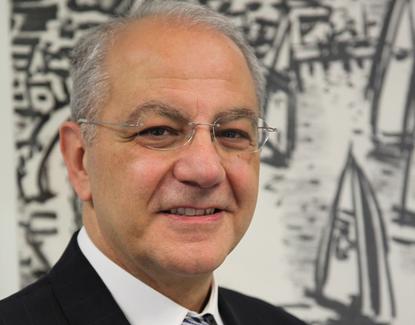The physics of a healthy business
- 11 November, 2013 09:58

Monash Health CIO Dr Philip Nesci
“I’ve spent most of my career on leading change initiatives as an integral part of the business, rather than focusing on technology”, says Dr Philip Nesci, CIO for Monash Health, Victoria’s largest health care provider.
“I’m not interested in the technology per se, but only what it can do to improve business.”
Like his view of technology, and as with many other CIOs, Nesci’s background doesn’t show the IT focus that might be expected of someone who has been global CIO for international chemicals company Orica, and director for IT for Energy Australia.
Instead, he has a doctorate in nuclear physics and authored a book titled “Inelastic Proton Scattering as a Test of Nuclear Spectroscopy” in the late 1970s. He is also a graduate of the executive program at the Michigan Business School.
“The most useful courses have been those that have focused on commercial business management and those that develop soft skills such as leadership, collaboration and influencing, and people management,” he says.
This people-oriented attitude is critical at Monash, a public health service which provides integrated health care to a quarter of metropolitan Melbourne’s population.
This includes 193,000 people admitted to its various hospitals in the last year, 180,000 emergency presentations, and more than 9000 babies delivered.
“Being in the public healthcare industry, we are not for profit. Our main drivers are about providing access to healthcare and improving the quality of care for our patients. I spend most of my time working with the business to achieve that rather than the technology initiatives,” he says.
Not to say technology and the IT department don’t play important parts in the organisation’s activities.
Currently, Nesci is working on getting the organisation to embrace an electronic medical record system, something he says will be critical for improving the way it delivers better patient care.
“It will eventually have a major impact on the organisation.” Another key technology area is mobile technology. “Gone are the days when you could mandate what devices staff use,” he says.
“Many of our staff now have more computing power on their devices and at home than on their desktops [at work].
“We have changed our network to be device agnostic, where staff can bring their own devices or use the ones that we provide. Mobile staff use multiple devices that pose a challenge in providing a seamless experience across all devices. Our IT staff have had to skill-up to support a multitude of devices, rather than those which we provide.”
But it’s still down to business, and he reports direct to the CEO.
“As CIO, you cannot be effective without the support of the CEO. In fact, it is critical to have a trusted relationship with all of the executive team, as change initiatives will require securing their commitment and support at various times. But the most critical relationship is with the CEO.”
Change is a consistent aspect of Nesci’s experience. In addition to his Orica and Energy Australia background, he has also been head of IT for China Light & Power in Hong Kong, and worked for Shell International in Australia, UK and the Netherlands.
That changing locations is reflected in the general role of the CIO profession, he says.
“Over the last 30 years it has become less technical and more business-focused, which is a good thing. The current trend for consumerisation of IT, mobility and cloud services will shift the role of the CIO even more towards business value and further away from the technology itself.
“With his shift, the competencies of the CIO are about strategic and commercial orientation, change leadership, collaboration, influencing strategy, and a strong customer focus.”
But a strong business focus doesn’t mean that IT itself should be run as business.
“If you are running an internal IT organisation, you should be cost neutral. Businesses would resent any internal service with captive customers making a profit, particularly when businesses are always under pressure to manage their costs,” he says.
Making money out of internal customers would diminish the trusted relationship you are trying to achieve, he adds.
But the role of the future state CIO, he says, is a challenge in achieving the right balance between business focus and technology focus.
“That line is always moving.”
So his advice for those moving down that career path? Focus on the business first, he says. Your priorities should be the priorities of the executive team.
“Always think about what the business outcomes are that the technology can help achieve rather than the technology per se.”
This means there should be no ‘technology speak’ with the business. “Talk about how we can change the business for the better. Develop your soft skills, and spend time outside of the IT function in a commercial role,” he says.
And probably just as important as all other aspects, “get yourself a mentor”.
Perhaps even one who understands the ins and outs of inelastic proton scattering as much as the role of IT in business … and the role of business in IT.

